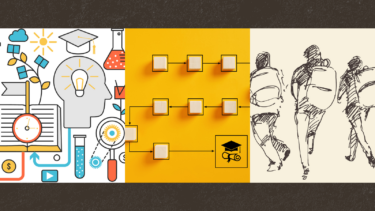Arts educators foster creativity in students through film production and jazz. They encourage community through student theatre and murals. They help build understanding among cultures of a school through dance. As they have demonstrated in Illinois, arts educators also help develop effective public policy.
The ESSA Arts Indicator in Illinois
Also In this Issue
The Art of Early Childhood Education
By Eleanor D. BrownArts integration shows promise for school readiness, emotion regulation, and stress reduction in the youngest, most vulnerable students.
How Arts Education Supports Social-Emotional Development: A Theory of Action
By Camille Farrington and Steve ShewfeltInstructional practices rooted in action and reflection could transform how all disciplines build students' competencies.
Advancing Arts Education in Arizona
By Catherine "Rusty" FoleyArizona leverages partnerships, ESSA funding, and a diploma seal to bolster equitable access to arts learning.
Arts in Turnaround Strategies
By Valerie NorvilleA+ Schools and Turnaround Arts schools commit to a model of school improvement.
Using Arts Data to Match Community Organizations to School Needs
By Valerie NorvilleSix communities follow Chicago's lead in developing arts education census data and maps.
Using ESSA to Leverage Arts Education Policy
By Lynn TuttleSeveral states are using ESSA to increase access and quality in arts instruction.
The ESSA Arts Indicator in Illinois: A Study in the Art of Policymaking
By Jonathan VanderBrugArts educators bring creativity and process expertise to their work on statewide accountability.
The Role of Arts Integration and Education in Improving Student Outcomes
By Yinmei Wan, Meredith Ludwig, Andrea Boyle and Jim LindsayIf research is to inform state policy, important gaps in research should be filled.
Expanding Access to High-Quality Arts Instruction
By Mary Dell'ErbaAdvancing research and innovative policies can move states toward universal access to a quality arts education.










 i
i
 i
i
 i
i